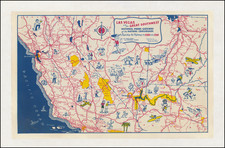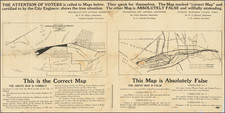The United States Geological Survey (USGS) Topographical map titled "Big Trees Quadrangle" provides a valuable snapshot into the evolution of the country’s understanding of its terrain. Issued initially in 1901 and subsequently updated in 1926, this map represents more than just contours and elevations; it tells a story of the hard work, dedication, and precision that early geographers and topographers brought to their craft.
The title of the map, "Big Trees Quadrangle," hints at the remarkable and grand landscapes that are characteristic of certain parts of the United States. With the presence of sequoias and other colossal trees in some regions, one can infer that this map covers an area boasting these natural wonders, likely situated in the western part of the country, known for its majestic forests.
The triangulation of the map, a method used to determine exact locations by measuring angles from fixed points, was executed by H. E.C. Feusier. Triangulation was crucial for accurate mapping, ensuring that all points on the map were correctly situated relative to one another. R. H. McKee, responsible for the topography, had the task of detailing the surface features of the landscape. The survey done in 1890-91 would have involved a team moving through the landscape, taking measurements, and noting features, a formidable task in an era without modern conveniences or technology.
In conclusion, the Big Trees Quadrangle map from the early 20th century is more than just a piece of paper with lines and labels. It's a testament to the pioneering spirit of early American geographers and topographers. The collective work of Thompson, Douglas, Feusier, and McKee reflects a time when understanding the vast American landscape was not just a scientific endeavor but also an adventure. This map stands as an enduring artifact of that age, representing the confluence of exploration, science, and art.










![(Southern California Aerial Photographs) [Collection of 9 Aerial Photographs of San Fernando Valley, Van Nuys, and Burbank]](https://storage.googleapis.com/raremaps/img/small/94783.jpg)


![[ Baja California / Gulf of California ] Carta Esferica de las Costas y Golfo De Californias Llamado Mar De Cortes Que Comprende desde el Cabo Corrientes hasta el Puerto de San Diego Construida …. 1825](https://storage.googleapis.com/raremaps/img/small/102732.jpg)
